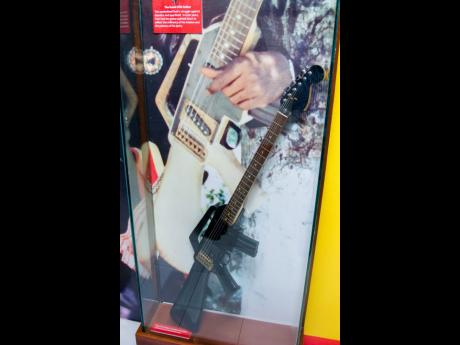Music museums, the private way
The Bob Marley Museum at 56 Hope Road, St Andrew, remains the top tourist draw in the Jamaican capital (although, strictly speaking, it is not located in Kingston). Up to the turn of the current decade it was the only game in town, as far as privately owned music museums, which are open to the public go.
That changed, fittingly enough, with the other two original Wailers. The Peter Tosh Museum was opened at Pulse's Trafalgar Road, New Kingston, headquarters in 2016, and last year Neville 'Bunny Wailer' Livingstone opened his own museum, honouring The Wailers, in Washington Gardens, St Andrew.
Now there are plans to open a music museum at 2B Grove Road, St Andrew, and no doubt there are other persons involved in the business of Jamaican popular music who will put the pieces they have access to on show in due course.
In all this, there is a Jamaica Music Museum. It does not have its own building (yet), but there is a national collection at the Institute of Jamaica on East Street, Kingston, and various exhibitions present artefacts from the collection to the public. This is a growth from a display showing a chronology of Jamaican popular music from plantation live to digital dancehall.
I am an unshakable believer in the national collection, even as I understand the thrust for private museum operations. I am not sure how many persons who go the private route understand that a museum is not simply a collection of items which someone has access to by ownership or 'links', with a label slapped on. There has to be an understanding of context which results in a connecting narrative.
The national collection, where people who are trained in not only this approach to the items but also their optimal preservation and display are in charge, is the surest way to best preserve, understand and present the artefacts.
On the other hand, in a situation where people took significant personal financial risk to fund music projects, who is to tell them and their descendants that they do not have the right to start a collection and call it a museum, whether or not it is up to scratch to be so designated or not? I, for one, would never dare tell someone who has not received direct government funding for their music business that they should put their little piece of history into state hands even though I believe that for continuity there are no safer hands.
For with a private collection, all it takes is a falling-out among principals or 'don't cya' offspring and there it all goes to the wind.
As time rolls on and the older generations of Jamaican performers, producers, promoters, engineers, musicians and other persons who laid a foundation for Jamaican popular music die, there will be the temptation to cling to and monetise a little bit of the history that we can reach out and touch and put on show.
But to what effect and for how long? For while a national collection grows, a private one tends to be static. There is simply not sufficient pull in any one private entity to keep adding significantly to the collection of artefacts.
So national is the way to go in the preservation of Jamaica's musical history although it would help significantly if the state would show its commitment by providing a building to house the Jamaica Music Museum in the manner befitting the status of Jamaican popular music.


